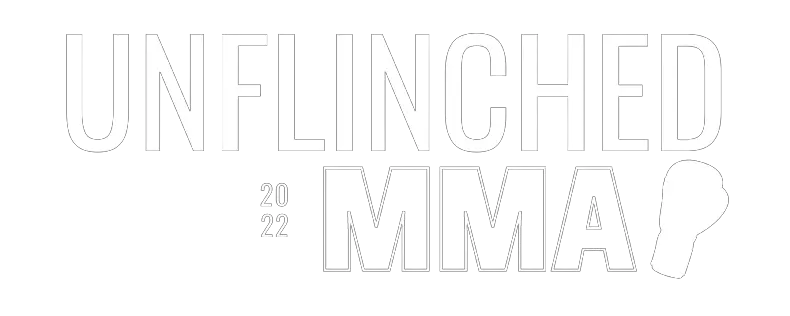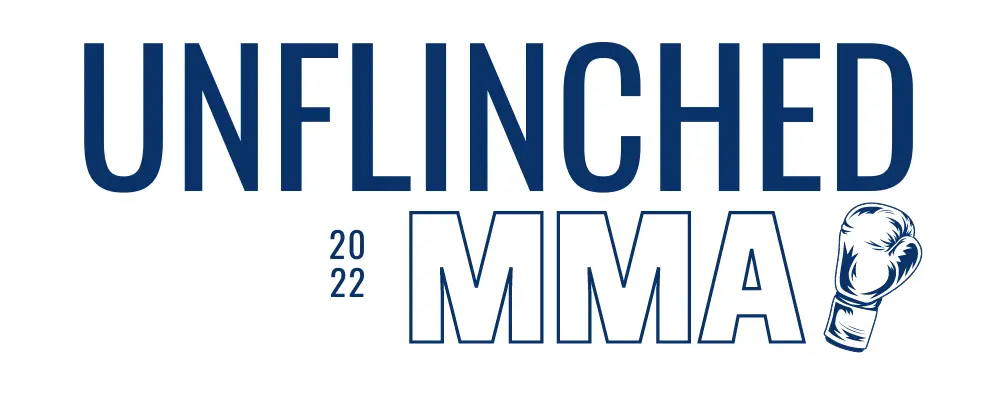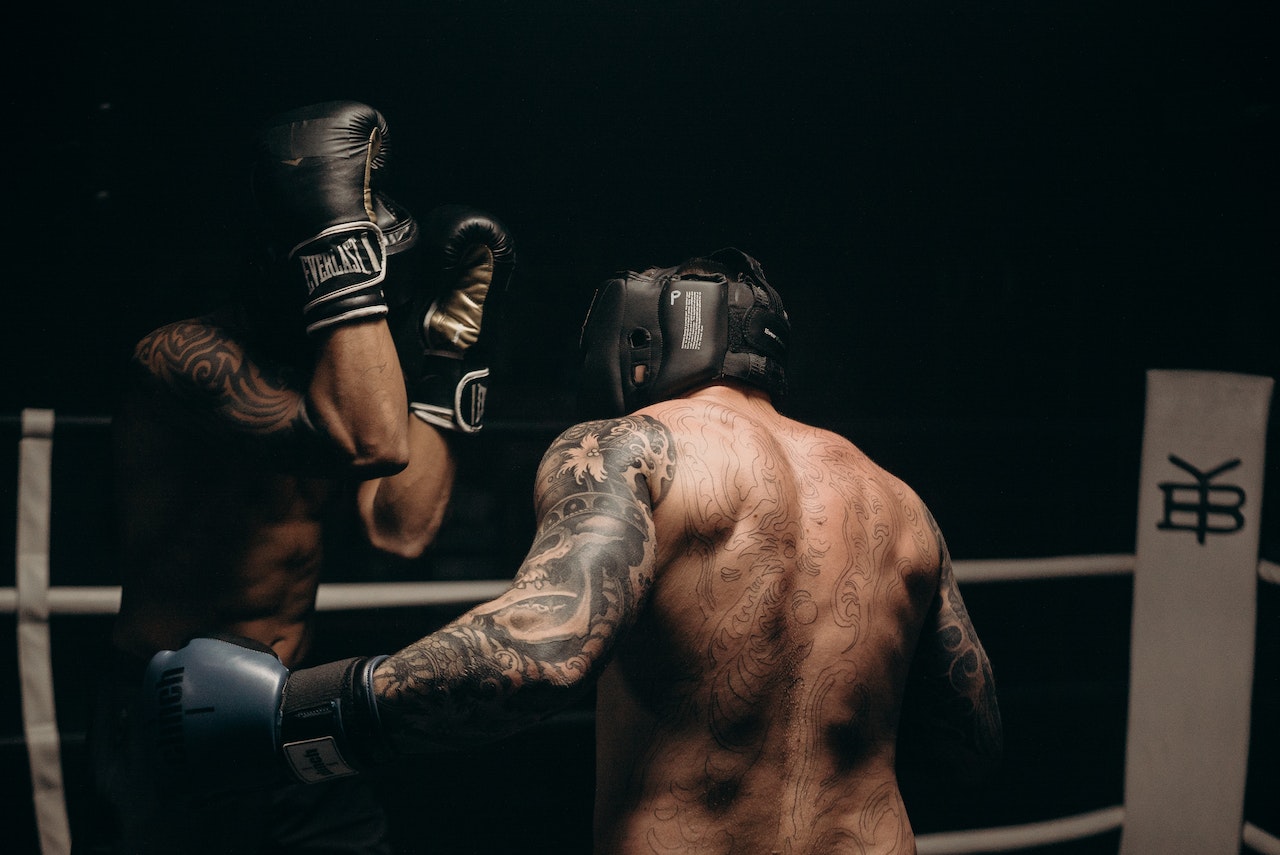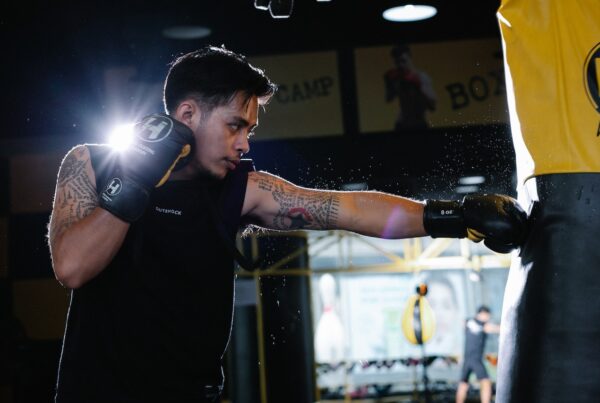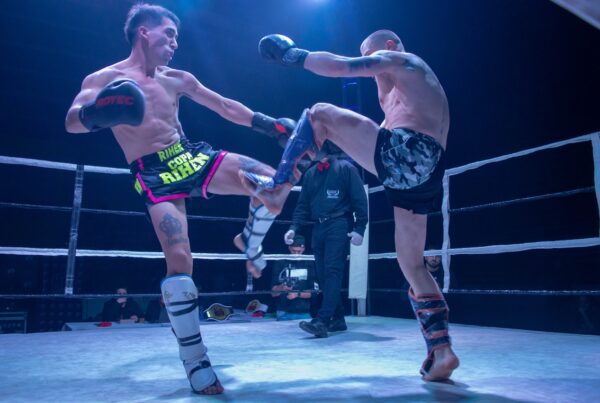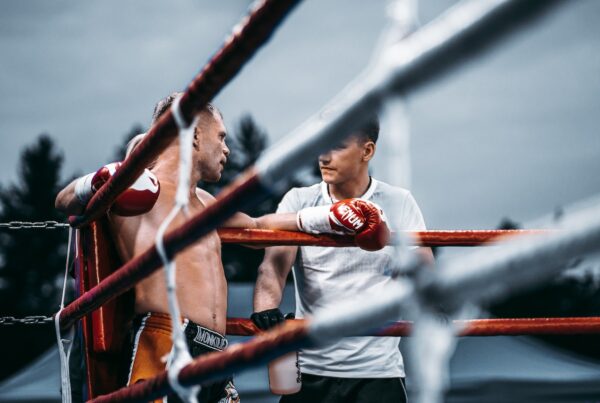Generally speaking, it’s a good idea to spar with headgear. If you’re sparring gently, headgear isn’t that important. However, Headgear can be an extremely useful instrument to avoid cuts, bruises, and lacerations in case of rough or more competitive sparring.
Contrary to popular belief, headgear serves no purpose to protect you or prevent a mild traumatic brain injury. So, the benefit that you get from wearing headgear mostly has to do with the ability to protect your face from superficial injuries.
As far as safety and pain are concerned, it depends on the type and severity of the injury. If we are talking about physical pain, the intensity of the pain remains almost the same with or without headgear. This is because headgear protects you from cuts and scrapes and not the impact of the blow with which you are being hit.
If you’re someone like me who’s deeply passionate about MMA and has regular office jobs or are just concerned about your looks in general, I would suggest wearing one. Let’s be real, you don’t want to walk around with cuts, bruises, or a broken nose.
This article will cover everything about Sparring with headgear, its safety, and which type of headgear to purchase for your routine.
Table of Contents
Does Headgear Do Anything? The Pros & Cons
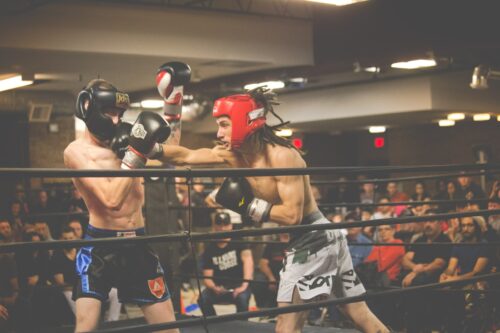
Headgear is definitely useful to prevent bruises and cuts to your face.
Headgear is definitely useful when preventing superficial injuries to the face and head. This means that it does not shield from a concussion or prevent the trauma taken to the head.
A headgear prevents your chances of getting black eyes, cuts on the face, bruises, and other marks. A good headgear consists of extra thick padding in the back to protect your head from bouncing off the floor in case you are knocked down, tripped, or knocked out completely.
Pros Of Headgear
- Prevents superficial Injuries – It prevents you from superficial injuries like cuts, bruises, and black eyes.
- Allows to spar with aggression– Headgear reduces pain from headshots. So, you and your opponents can use this opportunity to turn up the aggression, hit harder, and even go into unnecessary brawls.
- Increased confidence– Head gear decreases the pain of punch or tackle during spraining. This relief from pain makes you more confident. Your training is likely to improve with increased confidence and develop your skills.
Cons Of Headgear
- Limited Sight– Headgears contain large cheek protectors and a thick bar across the forehead. It can disturb your sight during combat or sparring.
- Makes you a bigger target– Wearing headgear naturally causes your head to be a bigger target. So, it increases your probability of getting hit.
- Develops a false sense of security– Although head gear increases your confidence, it might equally develop a false sense of security for many beginners out there. Thus, you are more willing to get hit more and it can be dangerous for your long-term brain health.
Also Read: How Long & How Often Should You Spar? Boxing, MMA & Muay Thai
Should You Spar With Or Without Headgear?
You should definitely spar with headgear most of the time. However, it’s not an obligation. Headgear can protect you from jaw injuries, cauliflower ear, and accidental headbutts. But with sparring, it entirely depends on your capability and knowledge.
So, if you’re a beginner, then the headgear is a must while sparring. This is because you’re still in the process of developing your skills and you’re more likely to encounter various bruises through training. Wearing headgear avoids your chances of such injuries.
For individuals familiar with sparring, you can skip headgear, Without headgear, you’ll have more time to master your hitting skills. Opponents will take fewer jabs at your head.
This can avoid cruel hits that often happen in professional matches. Remember headgear only minimizes and doesn’t completely stop the blow to the head.
Focus on building good habits whenever sparring with headgear. Avoid performing any tasks that you wouldn’t perform without the headgear.
Sparring with head gear protects your face and makes you comfortable with getting hit. The goal here is to fight exactly the same way without headgear. So, pay attention to building foundation and skills.
Wear headgear when you are sparring at maximum or near maximum intensity.
Remember people wearing headgear increase their chances of head trauma only because they have a false sense of safety. This makes them likely to be hit harder and more often. So when you and your sparring partner agree to perform sparring at (almost) maximum intensity, you need to wear the headgear.
I don’t suggest wearing headgear when you are doing technical and light sparring. This is because it will only increase the intensity and you’ll end up developing bad habits due to a false sense of security.
While sparring at a moderate pace, don’t wear headgear as it might make you focus on defense more.
How Much Does Headgear Help In Sparring?
Headgear helps in sparring to some level but being dependent on it is certainly not the approach. Headgear is not the best tool for protection. The main purpose of using a headgear is to avoid superficial injury.
The player can avoid a variety of cuts, bruises, and broken noses by using high-quality headgear. But don’t expect prevention from concussions and other brain injuries with headgear. They can lessen the intensity of the blow to the head.
The core motive is to protect against wounds that scar a player’s face and to avoid bleeding.
Is It Ok To Spar Without Headgear? Is It Safe?
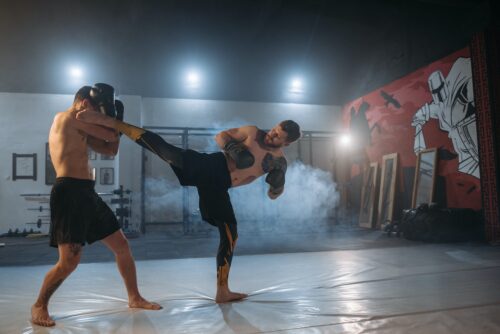
Sparring without headgear is safe if you are experienced enough.
It’s ok to spar without headgear and it’s safe if you know the right techniques and are experienced enough. That said, sparring with headgear is highly recommended because it can minimize the risk of things like blood clots and brain bleeds, which can be fatal.
However, headgear does not prevent rotational acceleration, which causes concussions. So if you’re looking to reduce your chances of concussion, then headgear can’t help you.
You can participate in training or fights without worrying about swelling, cuts, or bruises on your face. But the chance of concussions stands strong with headgear.
Headshots are very common in sparring and can be painful and injurious. So, wearing headgear can reduce this type of injury. Your possibility of winning the competition remains strong even with headgear.
In terms of safety, you should balance your sparring session to heal your body and mind. A good idea would be to plan your sparring session in advance. You and your partner can practice with the same intensity.
A safe technique to spar would be to aim lighter strikes to the opponent’s head and heavier shots to the body. Above all, learning to train more intelligently and protecting your brain is crucial.
Also Read: Does Sparring Hurt? 9 Tips For Safe Sparring Without Damage
Does It Hurt To Get Punched With Headgear?
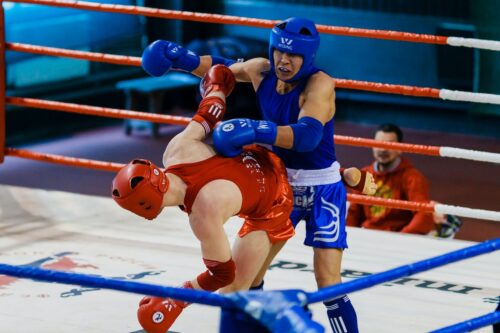
Getting punched with headgear feels the same. It doesn’t hurt as much because of the gloves. Headgear protects your face from cuts and bruises (not lessen the pain).
Getting punched with headgear doesn’t hurt that much. As a matter of fact, the intensity of pain remains the same with or without headgear. If you’re wearing headgear to avoid the pain of punch, then it wouldn’t create much of a difference.
Remember that your goal would be to hit and not get hit. Let’s assume that you’re sparring with a similarly sized opponent. Then you’d put every force on the earth to minimize the chance of landing a punch and experiencing pain.
Even if a punch lands and hurts, you’d be distracted from many other things. Thus, punches won’t hurt because you likely won’t notice any pain.
It may absorb some small amount of the impact, but not nearly enough to lose your game. To give you a more vivid picture, the punch will feel more of a thudding force than a sharp one.
Some people believe that headgear gives them a headache. But that’s just a small number. Punches would only hurt when they land forcefully and on a sensitive area.
Make sure to improve your tactics and you’d be good to go.
Does Headgear Prevent Cauliflower Ear?
Headgear can help with preventing cauliflower ear. Cauliflower ear happens when your ear is grinded, folded, or mangled in any way while you are rolling. This injury in the ear will break the cartilage from its connective tissue, with liquid filling the space in between.
Headgear protects your ear. It is important to highlight that the quality of headgear is a game changer. So, make sure to choose headgear that fits you well and doesn’t slide into your ear. Or else, someone will pull on it.
Cauliflower ear is unappealing and can cause hearing problems if it’s severe. Therefore, wearing headgear is a good idea.
Recommend Headgear
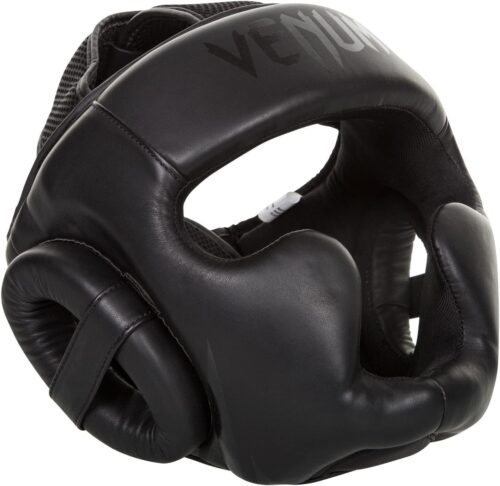
Venum Challenger Headgear
Headgear is something you shouldn’t skip in your training. Based on my experience, you should go for a headgear that easily fits, gives you the most visibility & ventilation, and doesn’t disrupt your performance.
I would recommend Venum Challenger 2.0 Headgear. It’s a great deal for the money you invest in. It comes with lightweight head protection and provides a solid amount of padding. This goes well for beginner and intermediate levels.
FAQs
Q: Does headgear stop concussion?
Headgear can’t stop concussions. Contrary to popular belief, concussions don’t happen by blow on the head. So, headgear doesn’t absorb any blows to the head. Concussions are the outcome of neutral whiplash that causes the head to accelerate and damages the brain.
Q: Why Are Male Boxers Not Wearing Head Guards In The Olympics?
Male boxers are not wearing head guards in the Olympics because they have been instructed by the International Boxing Association, AIBA for safety reasons.
Since head guards don’t protect from concussions and create problems like obstruction of vision, and a false sense of security, it only increases risk.

